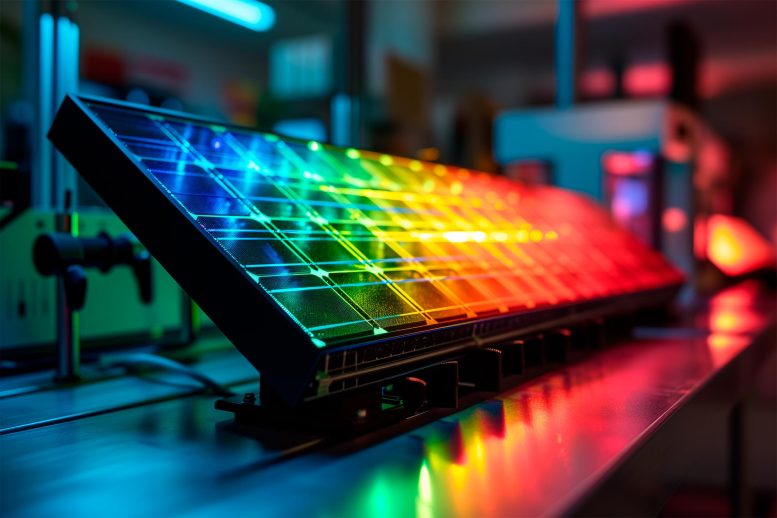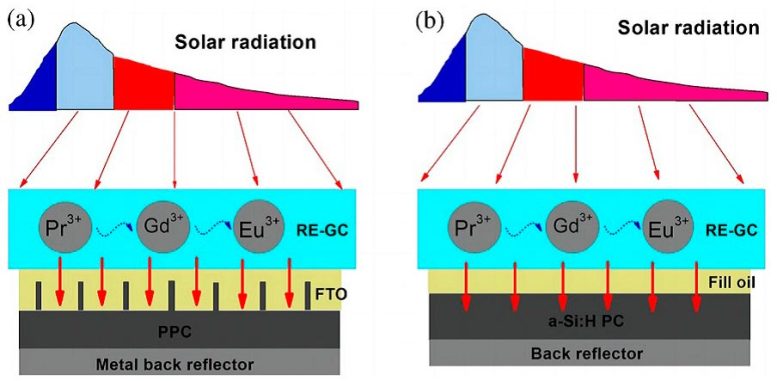
In an advancement in photovoltaic technology, a new GdPO4 glass-ceramic layer improves light-to-electricity conversion by utilizing UV light more effectively. This innovation enhances both the efficiency and durability of solar cells, offering significant potential for future renewable energy solutions. Credit: SciTechDaily.com
The protective material transforms harmful ultraviolet photons into visible light, increasing the conversion efficiency of photovoltaic devices.
Over the past decade, photovoltaic cells (PCs) have garnered much attention worldwide as promising sources of renewable energy. However, PCs still have not achieved light-to-electricity conversion efficiencies high enough to gain widespread adoption, and scientists are on the lookout for new materials and designs with better performance.
Limitations of Current Photovoltaic Technologies
Two of the most actively studied types of PCs are perovskite PCs and amorphous-silicon carbide (a-SiC:H) PCs, each with their own set of limitations. Perovskite PCs suffer from two major setbacks: first, even though solar radiation covers wavelengths that go from near-infrared all the way up to ultraviolet (UV) light, perovskite PCs use only a small portion of this spectrum, leading to low energy conversion efficiency. Second, they are vulnerable to photo-degradation from exposure to high-intensity UV light. In contrast, a-SiC:H PCs cannot effectively harvest UV light owing to a mismatch between the spectral profile of sunlight and the spectral response of a-SiC:H materials.
Innovative Spectral Converter Layer
But what if these problems could be solved simply by applying a special transparent layer on top of the PC? In a recent study published in the Journal of Photonics for Energy, a research team including Dr. Pei Song from Shanghai University of Engineering Science, China, developed a novel solar spectral converter using a GdPO4 glass-ceramic (GC) material doped with praseodymium (Pr) and europium (Eu) ions. This technology could lead to notable boosts in performance and applicability in solar cells.

Applying a transparent Pr3+/Eu3+-doped glass-ceramic layer on top of a photovoltaic cell simultaneously protects it from damaging UV light and converts that UV radiation to visible light, thereby enhancing the light-to-energy conversion efficiency. Credit: Journal of Photonics for Energy
Mechanism and Benefits of the New Converter Layer
The main purpose of GdPO4-GC:Eu3+/Pr3+ is to absorb UV photons from solar radiation and re-emit them as visible light. This is possible thanks to the efficient energy transfer that happens between the ions in the material. When a UV SciTechDaily